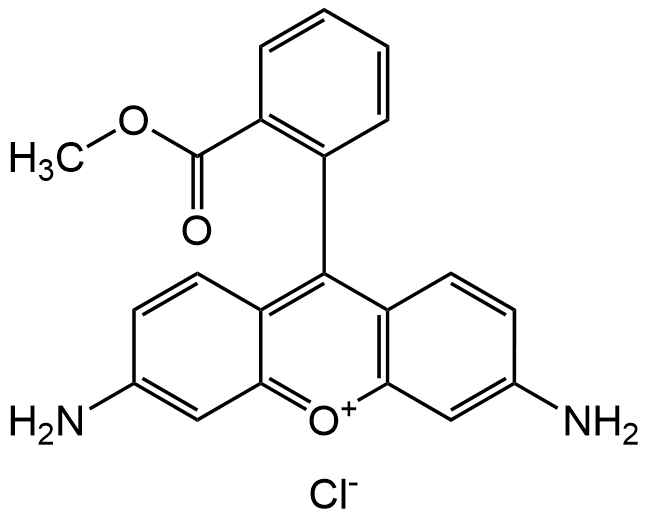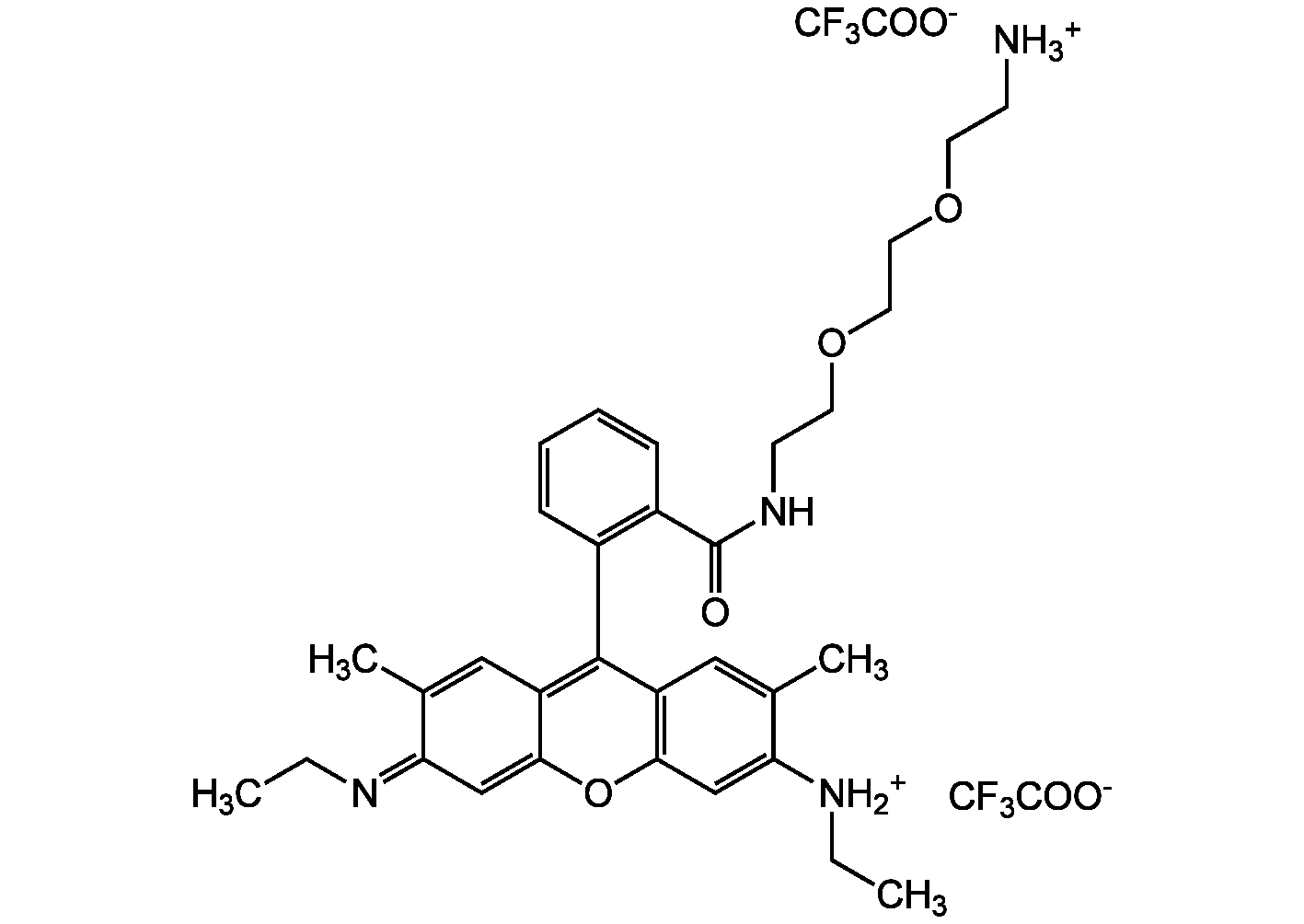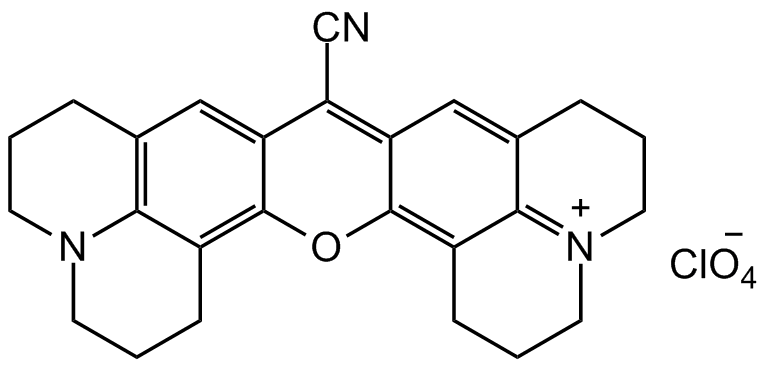
Chemical Structure
Rhodamine 123 (chloride)
CDX-R0011
CAS Number62669-70-9
Product group Chemicals
Estimated Purity>85%
Overview
- SupplierChemodex
- Product NameRhodamine 123 (chloride)
- Delivery Days Customer10
- CAS Number62669-70-9
- CertificationResearch Use Only
- Estimated Purity>85%
- Scientific DescriptionChemical. CAS: 62669-70-9. Formula: C21H17N2O3 . Cl. MW: 380.83. Soluble in ethanol (10mg/ml) or DMSO (10mg/ml). Rhodamine 123 is a membrane-permeable cationic dye that is readily accumulated within living cells. It is a substrate for the efflux pump P-glycoprotein (P-gp; also known as multidrug resistance protein 1 and ABCB1) and is rapidly exported from cells with functional P-gp. As P-gp is expressed on a population of stem cells known as the side population, rhodamine 123 is used to detect this group of stem cells. It is possible to use rhodamine 123 for detecting cancer cells since it is selectively localized in cancer cells, and its fluorescence is closely related to the alterations in mitochondrial distribution. Rhodamine 123 also accumulates within mitochondria due to its positive charge and can inhibit oxidative phosphorylation. Rhodamine 123 is a popular green fluorescent mitochondrial dye that stains mitochondria in living cells in a membrane potential-dependent fashion. It is utilized for staining a wide variety of cells, including plant cells and bacteria. Like JC-1, rhodamine 123 is used for measuring mitochondrial membrane potential besides its selective mitochondrial staining. It is widely used in flow cytometry studies. Functional assays for MDR proteins are better prognostic indicators in cancer therapy than levels of MDR protein expression. The spectral properties of rhodamine 123 similar to those of FITC make the use of rhodamine 123 quite convenient as almost all fluorescence instruments are equipped with excitation source and filter set of FITC. Rhodamine 123 can be used in multiparameter analyses without fluorescence interference in combination with common protein labeling dyes such as PE-Cy5 and AMCA. Spectral Data: Absorbance, 497nm. lambdaEx/lambdaEm (MeOH) = 507/529nm. - Rhodamine 123 is a membrane-permeable cationic dye that is readily accumulated within living cells. It is a substrate for the efflux pump P-glycoprotein (P-gp; also known as multidrug resistance protein 1 and ABCB1) and is rapidly exported from cells with functional P-gp. As P-gp is expressed on a population of stem cells known as the side population, rhodamine 123 is used to detect this group of stem cells. It is possible to use rhodamine 123 for detecting cancer cells since it is selectively localized in cancer cells, and its fluorescence is closely related to the alterations in mitochondrial distribution. Rhodamine 123 also accumulates within mitochondria due to its positive charge and can inhibit oxidative phosphorylation. Rhodamine 123 is a popular green fluorescent mitochondrial dye that stains mitochondria in living cells in a membrane potential-dependent fashion. It is utilized for staining a wide variety of cells, including plant cells and bacteria. Like JC-1, rhodamine 123 is used for measuring mitochondrial membrane potential besides its selective mitochondrial staining. It is widely used in flow cytometry studies. Functional assays for MDR proteins are better prognostic indicators in cancer therapy than levels of MDR protein expression. The spectral properties of rhodamine 123 similar to those of FITC make the use of rhodamine 123 quite convenient as almost all fluorescence instruments are equipped with excitation source and filter set of FITC. Rhodamine 123 can be used in multiparameter analyses without fluorescence interference in combination with common protein labeling dyes such as PE-Cy5 and AMCA. Spectral Data: Absorbance, 497nm. lambdaEx/lambdaEm (MeOH) = 507/529nm.
- Storage Instruction-20°C,2°C to 8°C
- UNSPSC41116134






![Rhodamine 123 [62669-70-9]](https://www.targetmol.com/group3/M00/3E/D7/CgoaEGbDDTWEfTHhAAAAAO_VROM758.png)
